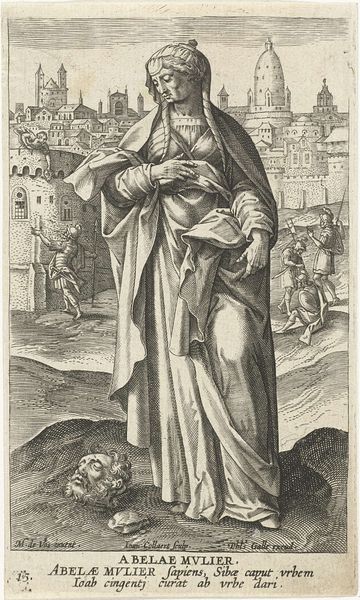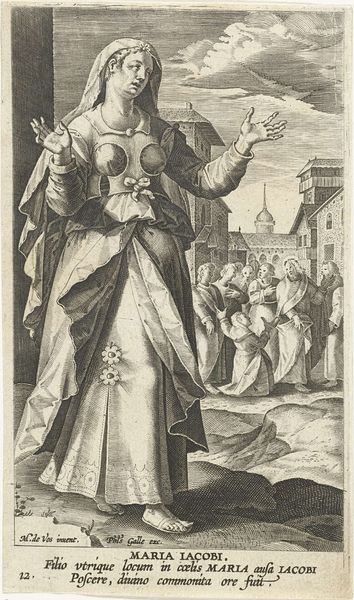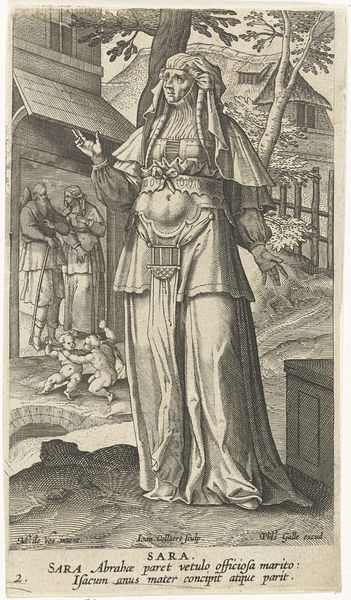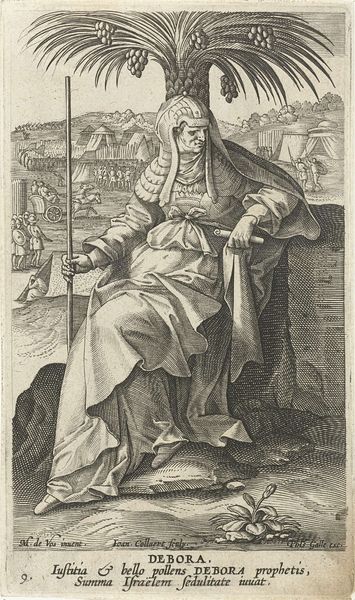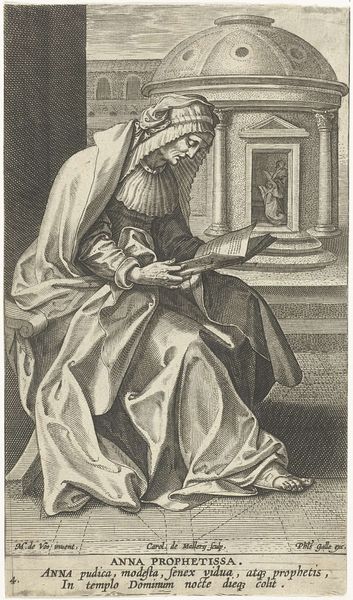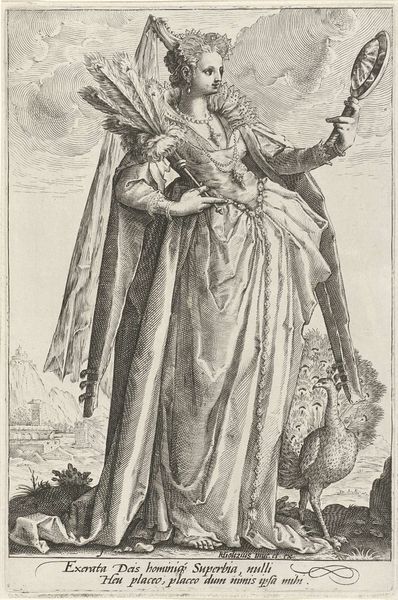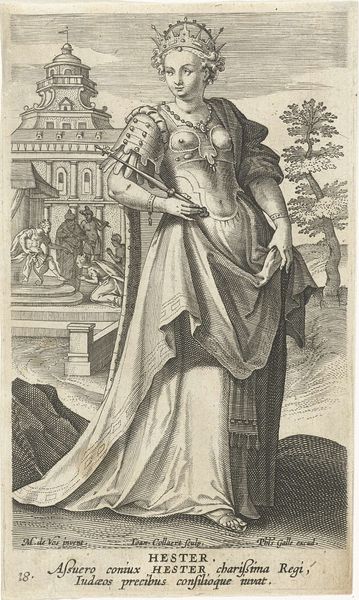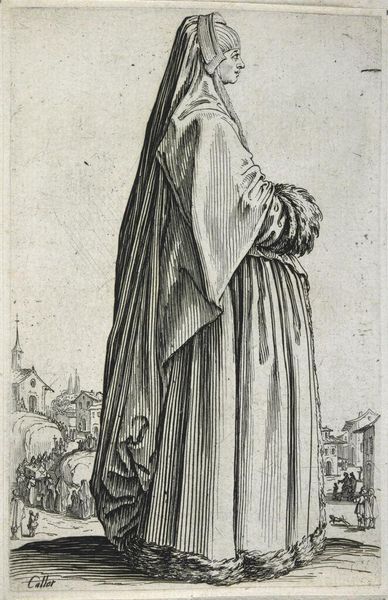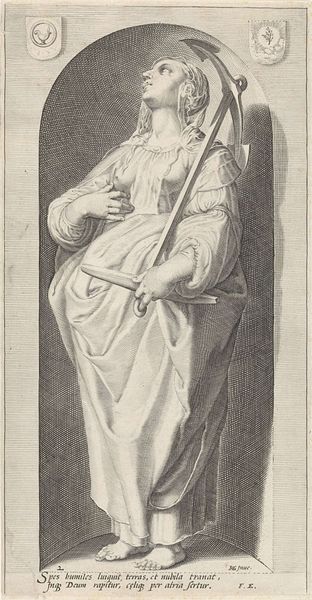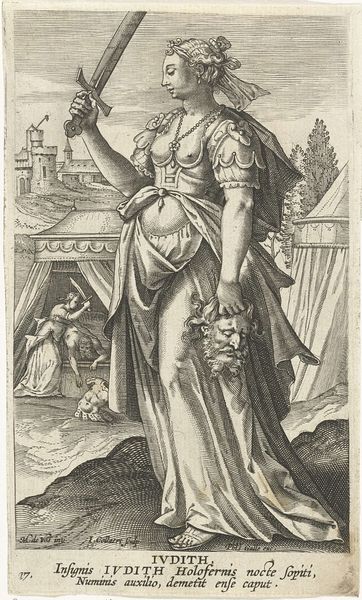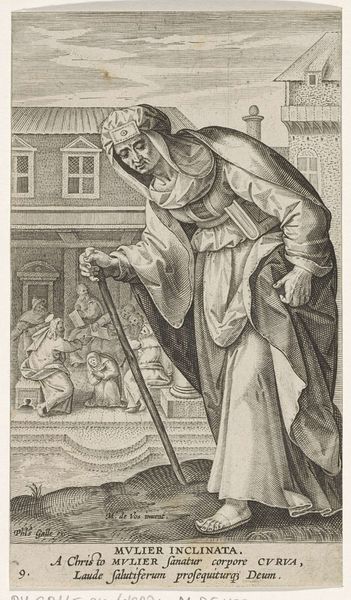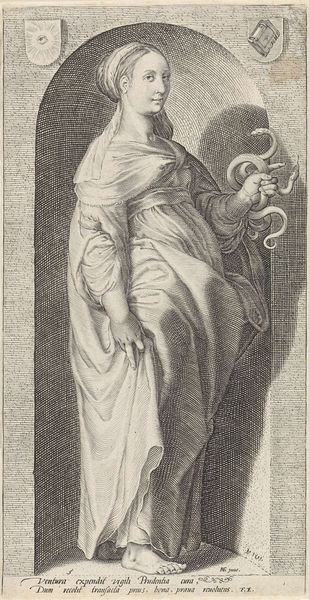
print, engraving
#
portrait
# print
#
mannerism
#
history-painting
#
engraving
Dimensions: height 160 mm, width 94 mm
Copyright: Rijks Museum: Open Domain
Curator: Before us is "Sara, wife of Tobias," a print made between 1588 and 1595, currently held at the Rijksmuseum. It was created by Jan (II) Collaert, employing engraving to capture a scene steeped in history and presented in the Mannerist style. Editor: My initial response is one of melancholic solitude. She's bathed in light, set against this very detailed, almost theatrical backdrop. There's an intriguing combination of vulnerability and resilience radiating from her posture and gaze. Curator: Absolutely, and I think much of that interpretation stems from the biblical narrative depicted here. Sara's story from the Book of Tobit is a potent example of female suffering and resilience. She was widowed seven times, each husband dying on their wedding night, a reflection of societal constraints placed on women at the time. Her pose, looking heavenward with hands clasped, underscores this intersection of faith and imposed hardship, begging for an escape. Editor: I see the symbolism deeply embedded in this visual depiction. Her upward gaze directs the viewer toward a higher power, while the precise lines etched by the engraver imbue her garments with a kind of weighty symbolism of piety. The open square near her waist is an unusual icon. Is this supposed to mark her disgrace, a badge of the ordeal through which she suffered? Curator: That's an interesting point to raise about a potential ‘badge of shame’ element. Given the Mannerist influence, however, the symbolism becomes more elaborate. The loose belt might represent her vulnerability and forced surrender. Editor: It’s captivating how Collaert balances Sarah's isolated pain with suggestions of hope. What do you suppose those figures in the background signify in the top of the buildings? They look as though they are ready to intervene. Curator: In her contemporary experience as a biblical icon of female suffering, this might mean that only outside forces of religious intervention could save them from these traumatic experiences. I see a larger narrative unfolding around Sara, suggesting how those from outside often enforce control in these vulnerable circumstances. Editor: Indeed, it leaves a lingering question about how faith intersects with personal and collective traumas across generations. Curator: Agreed, and seeing how this engraving portrays themes of female experience can shed light on social stigmas even now. Editor: An enduring, complicated image ripe with sorrow, yet laced with enduring symbolism of inner fortitude.
Comments
No comments
Be the first to comment and join the conversation on the ultimate creative platform.
